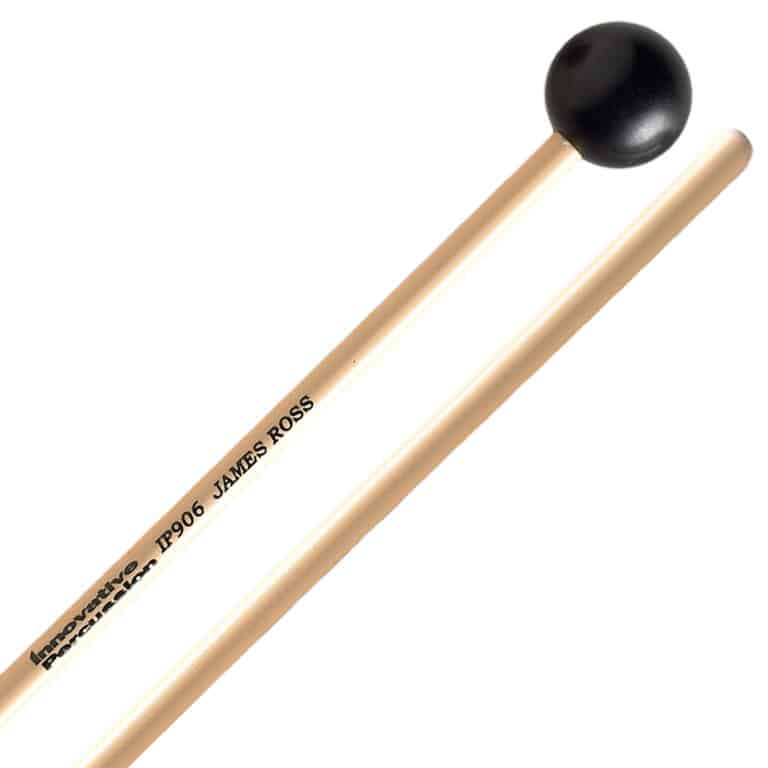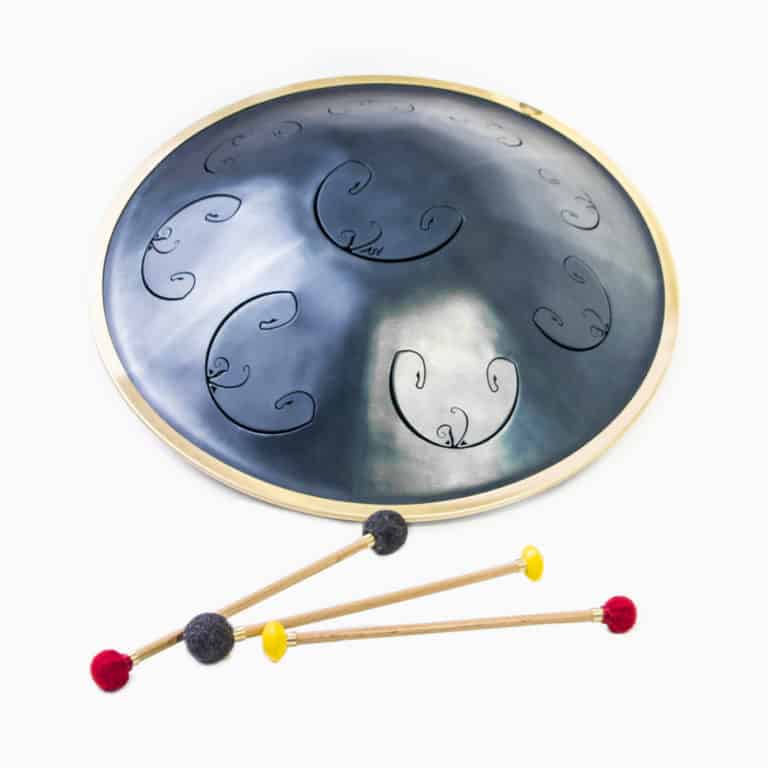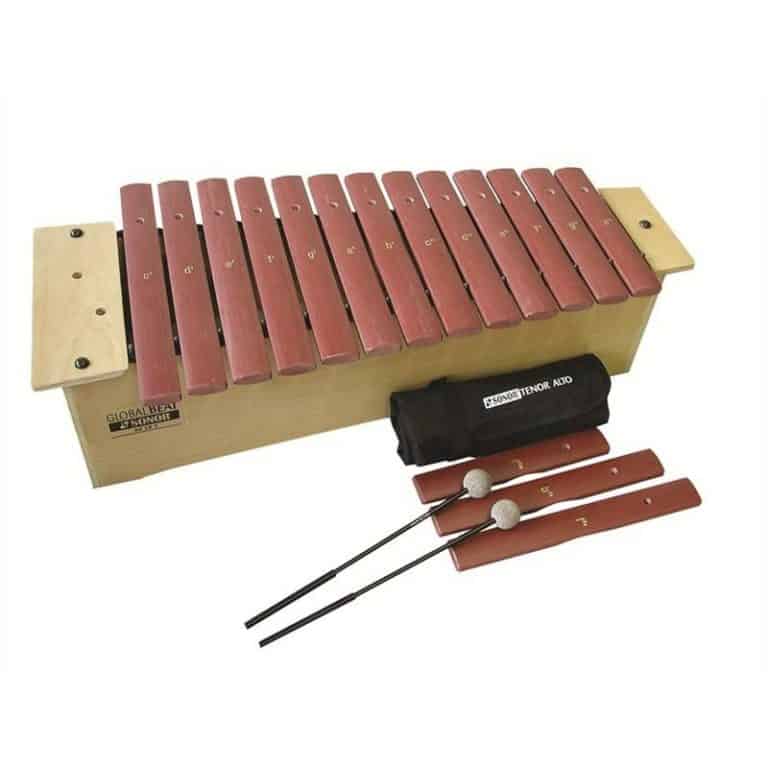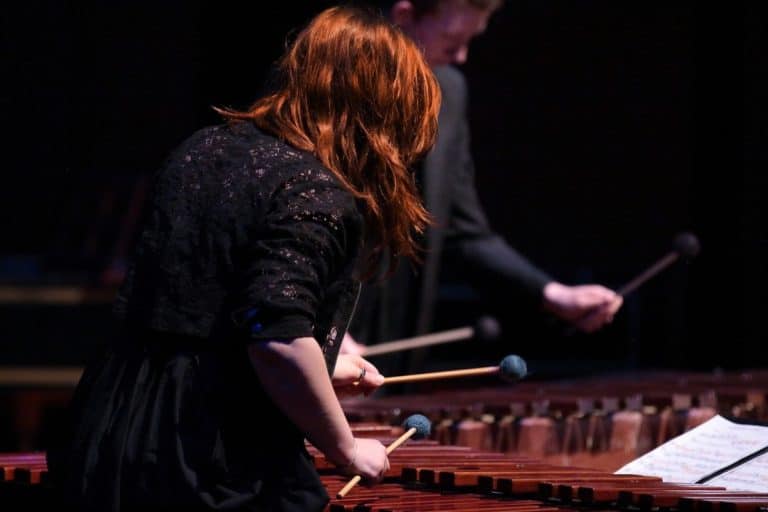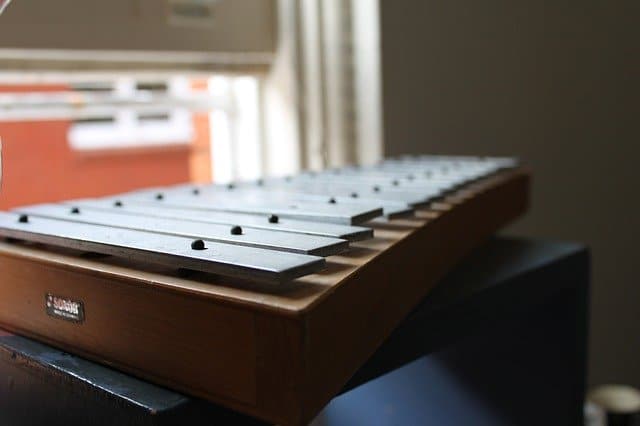The 3 Best Microphones for Xylophone
This article will provide a selection of just three microphones ideal for recording xylophone.
What are the best microphones for Xylophone? – There are 3 microphones to consider depending on the situation. Two options come from Shure, and another from Behringer, using either solo or matched pair configurations and dynamic or condenser microphones.
3 Best Xylophone Microphones
- Behringer C-2 Studio Condenser Microphones, Matched Pair [Click here to see the current price on Amazon]
- Shure SM81-LC Cardioid Condenser Instrument Microphone [Click here to see the current price on Amazon]
- Shure SM-57 Cardioid Dynamic Instrument Microphone [Click to see the current price on Amazon]
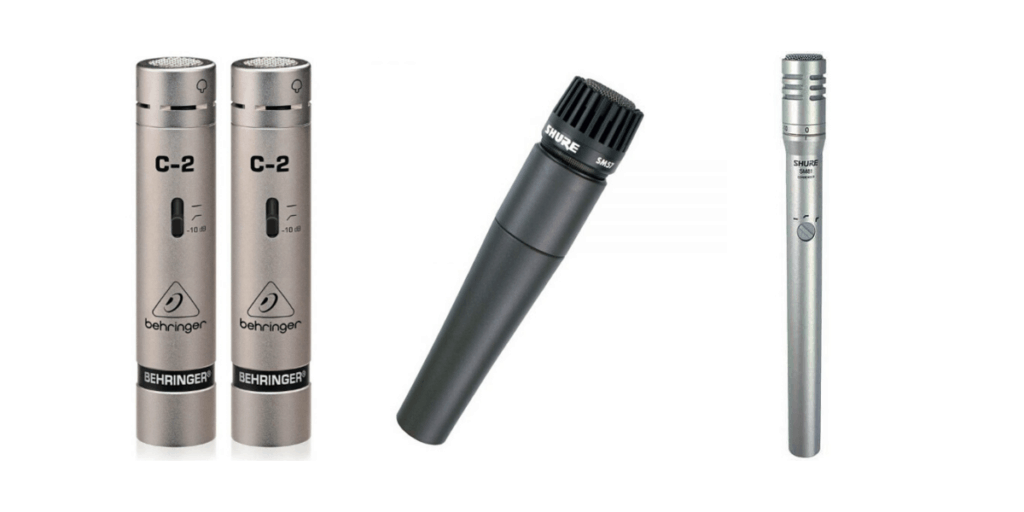
I’ve not recommended best under x dollars, or best over x dollars. there is no point, it only causes confusion. I leave you with the consideration that, what I recommend, I believe to be excellent value at the price, whether that price sits within your budget or not.
I’m not trying to find and recommend a microphone to suit everyone that lands on this page, I am recommending based on experience and practical use. Feel free to use the basis as a guide and choose as you please.
Read on and find out why these 3 microphones are my favorites for amplifying and recording the xylophone.
Shure SM81-LC Cardioid Condenser Instrument Microphone
Shure SM-81 Review – The Shure SM-81 is a popular choice in recording studios because of it’s pure and clear sounding, neutral response. One of the best low end reproductions for a small condenser microphone, the 81 is trusted at an affordable price and thanks to such a sturdy build [and undropped], should last a lifetime.
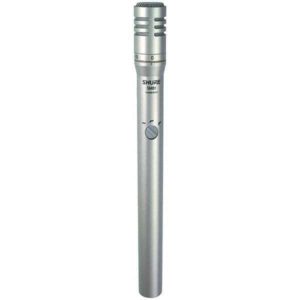
Sound Quality
What you get with the SM-81 is a condenser mic that is almost universally preferred for overhead miking of cymbals. That is sign enough that for ‘overheading’ a xylophone you have a mic that will pick everything up and deliver it whilst handling the sometimes harshness of the pitch.
Durability
As with any microphones and to a greater extent a condenser, you’ll not want to be dropping the SM81. Outside of that, as you would expect from Shure you have a rock-solid build with about as much protection as you could cram in. If Shure can be relied upon for one thing, it is building a microphone to last. The SM-81 is very durable and scores highly in this regard.
Value
Around $350 and upwards for a single unit, the Shure SM-81 is not going to be as cheap to set up a matched pair as the Behringers which follow, but you are getting Shure durability, an incredibly neutral sound, especially at the low end, and won’t be paying in excess of $1500 for a Royer ribbon.
As with anything Shure produce, value is never in question and comes as standard
Design
Remember that this mic has no internal shock mount and for that reason, hand-holding of this mic should be avoided at all costs. Other than that, we have a great Shure product delivering everything it promises. Its ability to capture all the subtleties of the xylophone without the harshness puts it ahead of its rivals.
Behringer C-2 Studio Condenser Microphones, Matched Pair
Behringer C-2 Review – Conveniently small, cheap and simple to use, there are better small condenser mics on the markets, but for simplicity and value for stereo recording, Behringer, who do make far more expensive mic equipment, has produced an SDC that delivers excellent value and has remained super popular on the market as testament to that.
![Behringer C-2 Condenser mic [Pair]](https://cdn-0.coolpercussion.com/wp-content/uploads/2020/02/behringer-c-2-studio-mic-1-1024x1024-1-300x300.jpg)
Sound Quality
One of the attractive things about the Behringer C-2 matched pair, [apart from the crazy cheap price] is the clarity with a perfect balance of brightness it delivers in conjunction with a xylophone. It just manages to naturally roll off some of the initial mallet strike harshness you can sometimes get which other mics do not ignore.
The reproduction is not going to match $1500 of Royer Ribbon mic but for the purpose, we are looking that’s exactly what I want.
Durability
Relatively lightweight and small, there is little damage you can do to the C-2 without making a concerted effort, or dropping them once too often. Once is too often of course but you get what I mean. Sturdy in construction in a powerful little model, the XLR sockets are well presented too and do not deteriorate with continual connection and disconnection.
Value
What more can I say? The very reason they are on the list is that I like value, and along with the Shure SM-57 following this review, the value of these can not be beaten. You will pick up a pair for less than $75. That’s TWO small condenser microphones that perform brilliantly for a fraction fo the price of some studio mics
Design
The compact design of the C-2’s offer good options above percussion which is why they are so popular in the field. Picking up from good distance overhead, they are perfect for the most flamboyant of mallet players, providing enough pick up to allow space.
Shure SM-57 Cardioid Dynamic Instrument Microphone
Shure SM-57 Review – What you have with the Shure SM-57 is the most durable instrument amplification microphone on the market. For around $100 you’ll not find a harder wearing, die-cast steel, shock protected, cardioid polar pattern, value instrument mic on the market. Proven by 20 years as the top choice of the touring sound crew microphone list.

Sound Quality
This is the go-to musical instrument performance mic across the entire industry and can handle being sat right in front of a guitar amplifier or directly on a snare drum. You’ll get no distortion no matter what level you are picking up.
However, it is a very direct microphone, which sits well for picking up the xylophone, although a single mic will probably not be sufficient as it’s real beauty is not picking up any bleed from elsewhere, including the width of your xylophone.
A minimum of 2 mics would be needed, ideally, 3, positioned left-right and center.
Durability
Arguably one of the most durable microphones on the market, the die-cast construction is designed for heavy handling and usage. I have an SM-57 which I have owned since 2004, has been to every gig I have worked, which still works perfectly today.
Value
Given you can still pick up a Shure SM-57 for less than $100, and my experience of durability and longevity with it, you’ll not find a better value instrument microphone. Yes there are better recording mics for studio environments, and yes, some more expensive mics will reproduce your xylophone sound better in some circumstances, but for an all-round performer, whether you are on the road or in the studio, this is by far the best value microphone on the market.
Design
Die-cast, directional and dynamic, the Shure SM-57 is perfect for performance-based instrument amplification, but also works really well as a vocal mic in the studio, if used correctly. It’s brother the SM-58, is preferred as a stage vocal mic given the unidirectional head, but we are not concerned with vocals here. It is a great option for miking underneath too.
Things to consider when miking a xylophone
The main consideration is what the purpose of using a microphone with your xylophone is. You may want to amplify as part of a performance or use the microphone to record your playing. There are slight differences in the situations which can require different types of mic. This article deals specifically with recording.
What Type of Microphone for Xylophone?
Not all microphones are the same, so you will need to choose one of the types that best suit your purpose. There are three types to consider, and variations on one as well.
- Dynamic Microphones
- Condenser Microphone
- Large Diaphragm
- Small Diaphragm
- Ribbon Microphone
PRO-TIP – Whatever the situation, use headphones to find the sweet spot of placement in whatever configuration or situation you find yourself miking a xylophone. [or any other instrument for that matter]
For this article, I do not recommend a ribbon microphone, nor a large-diaphragm condenser. For this reason, as you have seen above, my focus has been on the dynamic and small condenser mics.
Dynamic Microphones
Many people are going to leapfrog the cheaper dynamic microphones for more expensive, specialist, condenser or ribbon models. Whilst there is very much an argument for doing so, Dynamics shouldn’t be written off completely.
Dynamic microphones are cheaper and more durable than their counterparts. You will most likely find them on tour, miking up guitars and drum kits, being knocked about and generally man-handled a great deal.
This is where the durability comes in, and certainly, not all dynamic microphones are up to the task of picking up the nuances of a slightly more subtle xylophone compared against a thrashing guitar sound, however, there is one recommendation I am happy to make from this category.
If you have not guessed already it is the good old reliable and famous workhorse of the performance tour, the SHURE SM57
Condenser Microphones
A condenser microphone or what might be called a capacitor microphone in the UK, is the preferred choice of mic in the recording studio scenario for a xylophone.
Condensers come in two sizes, Large and small, referring to the diaphragm size. For Xylophone recording, you will want SMALL.
A condenser microphone works by switching sound into electrical frequencies is a superb way to record your xylophone. You may be warned not to look at cheap condenser microphones.
It is fair to say that often the more money you spend the better, and there are some seriously expensive condenser microphones out there to buy, but the best condenser for your xylophone recordings as recommended at the head of this article can be purchased for less than $100
Ribbon Microphones
Ribbon microphones are the mic that hears your instrument more like your ears than any other type of microphone. Superior low end pick up and high-end roll-off, the figure-of-8 polar pattern picks up instrument sound in the most natural fashion
These are highly sophisticated microphones, the most superior of course and once upon a time, the only type of microphone to be found in a recording studio.
A ribbon mic reproduction is very detailed but the beauty is that it is not over-sensitive and therefore works brilliantly at close range and will not pic up bleed from other sources.
The reason this doesn’t work for me for Mallet percussion and in particular the xylophone, is I need space for mallet movement, and mics at too close proximity will pick up the mallet strike more than the resonance of the bar
How Many Microphones Should I use?
The number of microphones you use to amplify or record you xylophone will depend on two things
- The size of the instrument
- Mic placement
The xylophone is quite narrow in comparison to say a Marimba, where I would say a 2 microphone set up is essential, although, it is not impossible to record Marimba with just a solo mic.
Even then, I would still prefer to record xylophone with a pair of microphones set up for stereo. That is just personal preference. As above for this, I think the Behringer C-2 pair os condenser microphones is perfect set up left and right.
It is not unknown for this to be complemented with a third, dynamic mic, set up beneath where possible, but again, certainly not an essential requirement.
Microphone placement for Xylophone
A couple of options here, depending on the number of microphones being used. I will provide more details on pairings rather than single mic set-ups as this is my personal preference and recommendation
Left/Right Placement

Here you have the stereo mic set up using Left and right mics on either end of the instrument. Great for picking up the bass and treble ends. There will be a little phasing in the middle but is great for really picking up either end of the spectrums on the high or low end.
The image shows the microphones set a little lower than I would suggest to allow for room for your mallet movement at either end, so simply set them a little higher depending on how elaborate your style might be.
X/Y Placement

Here is the X/Y placement set up, using the behringer condensers recommended at the start of the article.
Here the mics should be set up central to your instrument, or indeed central to whatever piece you might be recording in terms of the median center of the bars being played.
A microphone bar will provide the set up on the mic stand to achieve this. They are an inexpensive addition to a standard microphone stand. Together they are inexpensive and will last as long as you look after them.
- K & M Microphone Bar [Click to see on Amazon]
- LyxPro Microphone Stand Boom Arm [Click to see price on Amazon]
You will get some crossover from left or right in the center but to a lesser extent than with the L/R set up which directionally face each other.
To demonstrate this better the image below displays how the XY set up crosses on the pick up.
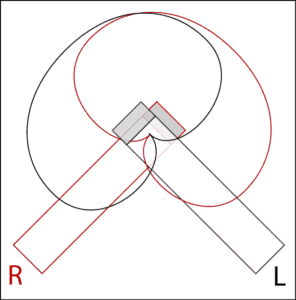
Number of mics to use depending on size
Xylophone size does not differ greatly, but my suggestion here is always 2 mics. Either left and right or in XY.
There is some argument for a third position below the instrument. I have friends who will always employ this in the studio, whereas for me, it just gets a little too much in the middle for my taste. This is a personal preference, however.
If you feel a third mic is essential for a more complete sound, I would suggest a large condenser mic used for the ‘room’, set up farther back.
This is not to say a single microphone will not do the job, but don’t go getting fooled into a Large Diaphragm condenser mic to try to pick everything up, only use one as a room mic as above, or stick with the single SDC on the least wide xylophones and you will still do OK
Related Questions
Will Stereo miking give too much presence?
Not if using the techniques mentioned above with SDC set ups. There is a danger is a single LDC is used for stereo set above and too close it may cause a problem
Amplifying a Xylophone?
If you are looking to amplify a xylophone for stage use, then I would default to the Shure Sm-57 range of microphones and position above in a 2 min situation left and right. As part of a percussion section, miking should be fine in this way, but in the rare case of perhaps appearing with rather more powerful amplification as part of a rock band say, i would consider employing some form of barrier or pod to play within to prevent bleed in from other instruments and amplification

